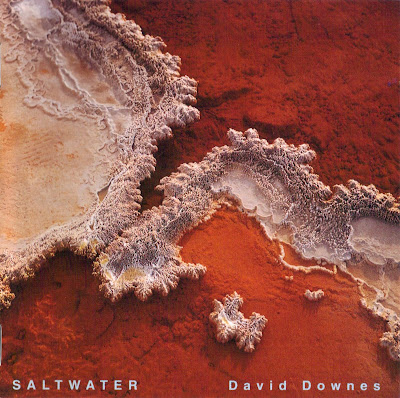What? You reckon the recent NZ electroacoustic that I've been posting is neither dry nor academic enough? Wrap your ear canals around these tracks and feel that tympanic membrane dessicate!
Actually, once you get past the first two
very short compositional exercises by Godfrey Winham, this record will bless you with four luscious animatronic beauties.
Winham was a Princeton music theorist and composer, and one of the great-grandfathers of computer music, developing FORTRAN-based composition software all the way back in 1960. Vercoe and Gressel studied with him. And contrary to my insinuation above, Winham's works are not in any way 'bad' -- just very cold, and difficult.
Barry Vercoe, the only dyed-in-the-wool Kiwi on this record, became interested in the possibilities of computer music after studying composition and mathematics in Auckland, and went on to design faster, smarter and easier ways to compose on the computer. Vercoe's piece is also the only truly electroacoustic work on the album: 'Synapse for Viola and Computer' sits closest to Rimmer in the Kiwi canon. The composition is just as it describes: a violist plays to a score written for his acoustic instrument, while the computer performs according to its own electronic score. It works wonderfully. The two 'performers' weave and dodge and embrace and run away from each other, and it feels fresh and alive. Extraordinarily, Vercoe was the founder in 1971 of the Electronic Music
Studio at the Massachusetts Institute of Technology. I say
'extraordinary' because this is not a minor achievement in the world of
electronic music, so why had I never heard of him? Like
Smalley
(who will be getting another post or two soon) he's operated for most
of his career outside of New Zealand, but generally Kiwis love to claim
every possible cultural hero, no matter how far-flung (e.g. Bill
Culbert, who will be representing NZ at the 2013 Venice Biennale, though
he's mostly lived in Europe since 1957; Len Lye, who left NZ for good
at the age of 25; or Frances Hodgkins who also produced her best work
after leaving permanently). He deserves to be better known at home. You can also have a listen to
this record -- a serious classic of early computer music -- but there doesn't seem to be much else available by Vercoe. I'll keep looking.
Richard Hoffman gets an honourable mention as a part-time Kiwi. His family emigrated from Austria to New Zealand when he was ten years old, and he lived and studied here until moving to the United States at the age of 22 to work with Arnold Schoenberg. So, he spent some very important years here, and as I said above, I'm happy to claim him. 'In Memoriam Patris' is both grave and exciting. It sounds like classic electronic music -- as do the following works by Gressel -- which was a surprise to me, as prior to listening to this record, I'd been defensively judgmental toward academic computer music, for no good gol-dang reason.
Joel Gressel's first work 'Crossings' made me think of
this synthesizer module, until I read the liner notes and saw that it is based on a 'spinning coin' phenomenon, rather than marbles or snooker balls. It could also remind the listener of Phil Dadson's sound works with clashing stones. 'P-Vibes' is possibly the most jarring of the works on the record, which brings us full-circle to the works of Winham.
My previous impression of early computer music was more along the lines of Godfrey Winham or Lejaren Hiller's experiments: interesting conceptually/not so interesting aurally. You will have gathered from other posts that I love the sounds of early electronic music (more so than digital-era electronic music) and that's what I love about these works. The Winham works are challenging and important historically and the rest of the album is exceptionally satisfying listening.
A Chaos of Delight [link removed: this recording has been re-issued on-demand from
New World Records]












